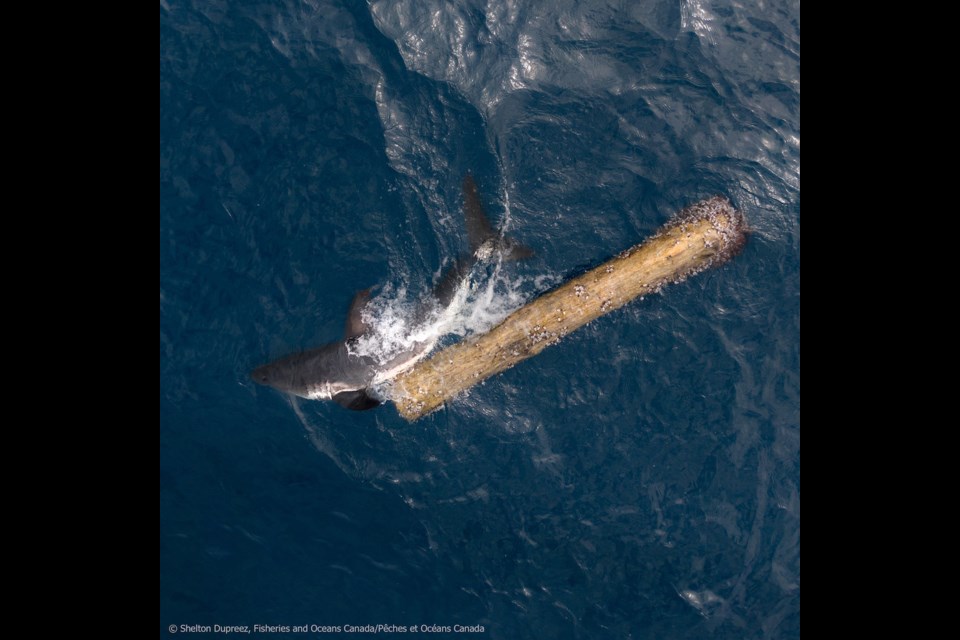Thanks to a recent expedition led by the federal Department of Fisheries and Oceans, Canadians have three more great reasons to protect the Pacific “Deepsea Oasis” off the coast of British Columbia.
On July 16, a crew departed from Sidney to explore more of the area officially known as the Pacific Offshore Area of Interest. Four times the size of Vancouver Island, this ocean area is home to at least 44 underwater mountains, ancient sponge gardens, volcanic vents and species found nowhere else on Earth.
Their focus was a deep dive to Explorer Seamount, part of an expedition organized in partnership with Fisheries and Oceans Canada, Ocean Networks Canada and the Nuu-chah-nulth Nation.
Explorer is an ancient underwater volcano that rises about 2.5 kilometres above the sea floor, similar in height to Blackcomb Peak. What we know is that seamounts sustain incredible biodiversity, which is critical to ocean’s health.
What we don’t know is endless.
On July 19, the crew announced that scans confirmed additional seamounts in the area. Quite literally, uncharted waters.
And there’s more. The expedition had also set out to better map a previously discovered area of dense sponge garden that scientists dubbed “Spongetopia.” This year, the crew returned to Spongetopia and discovered a new area of closely packed corals and sponges, dubbing it “Coraltropolis.”
Later in the week, the team shared captivating footage of a two-metre-long salmon shark giving itself a good scratch on a floating log in the Pacific — behaviour never before captured, according to DFO scientist Cherisse Du Preez.
It’s an entire universe of life, fundamentally connected to our own, just out of sight.
The dives, reaching depths of up to 2,000 metres, were livestreamed, allowing ordinary people to follow along in real-time as the crew tried to identify rarely seen animals.
More than 50,000 people tuned into the stream, watching as new discoveries were made and questions answered in real time. The video was also screened in Clifford Carl Hall at the Royal B.C. Museum.
More exciting news and discoveries are likely after the crew returns from the oasis. We may never know all of the area’s mysteries, and that is likely a good thing.
In June, Nature Canada and partners launched a petition to permanently protect this remarkable habitat as part of Canada’s commitment to double protections for nature by 2020, including at least 10 per cent of its oceans.
Bottom-trawling is prohibited in part of the area, but the entire water column remains open to commercial fishing, shipping and other industrial activities. A moratorium on oil and gas exploration, in effect since the 1970s, could be lifted at any point.
The DFO expedition has given us even more reasons to make this deep-sea oasis a protected area that will allow life to thrive and research to continue.
We know Canadians are enthusiastic about protecting our oceans.
It’s amazing to see so many British Columbians passionately speaking out about endangered southern resident orcas, or the need to reduce ocean plastic. But the 2019 expedition to Explorer shows we must focus our efforts below the surface, too.
Together, let’s encourage our governments to dig deep when it comes to ocean protection.
The Department of Oceans and Fisheries should work in a co-governance structure with the Nuu-chah-nulth and the Haida to make the Offshore Pacific Area of Interest a Marine Protected Area free from harmful industrial activity, including bottom-contact fishing and seabed mining.
Itchy sharks, new mountains and a coraltropolis. Who knew? From Nature Canada’s supporters from coast to coast, we want to thank every crewmember on board the Pacific Seamounts expedition for giving us more reasons to protect the Deepsea Oasis.
Gauri Sreenivasan is Nature Canada’s director of campaigns for protected areas.



